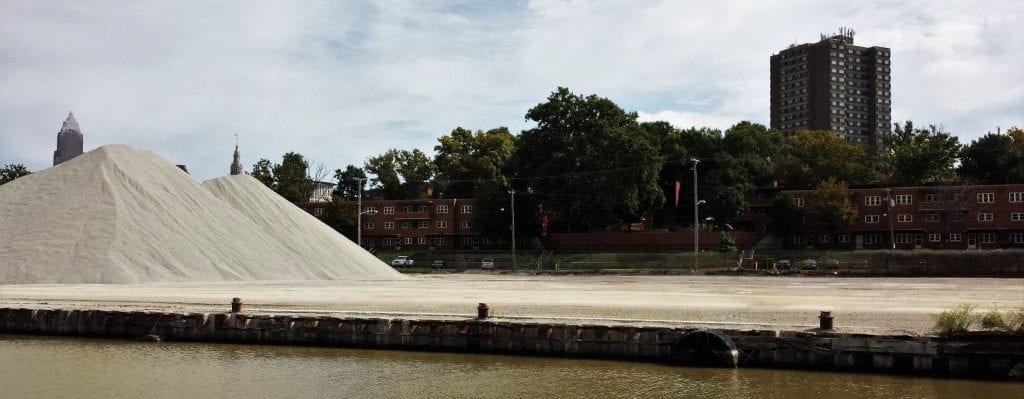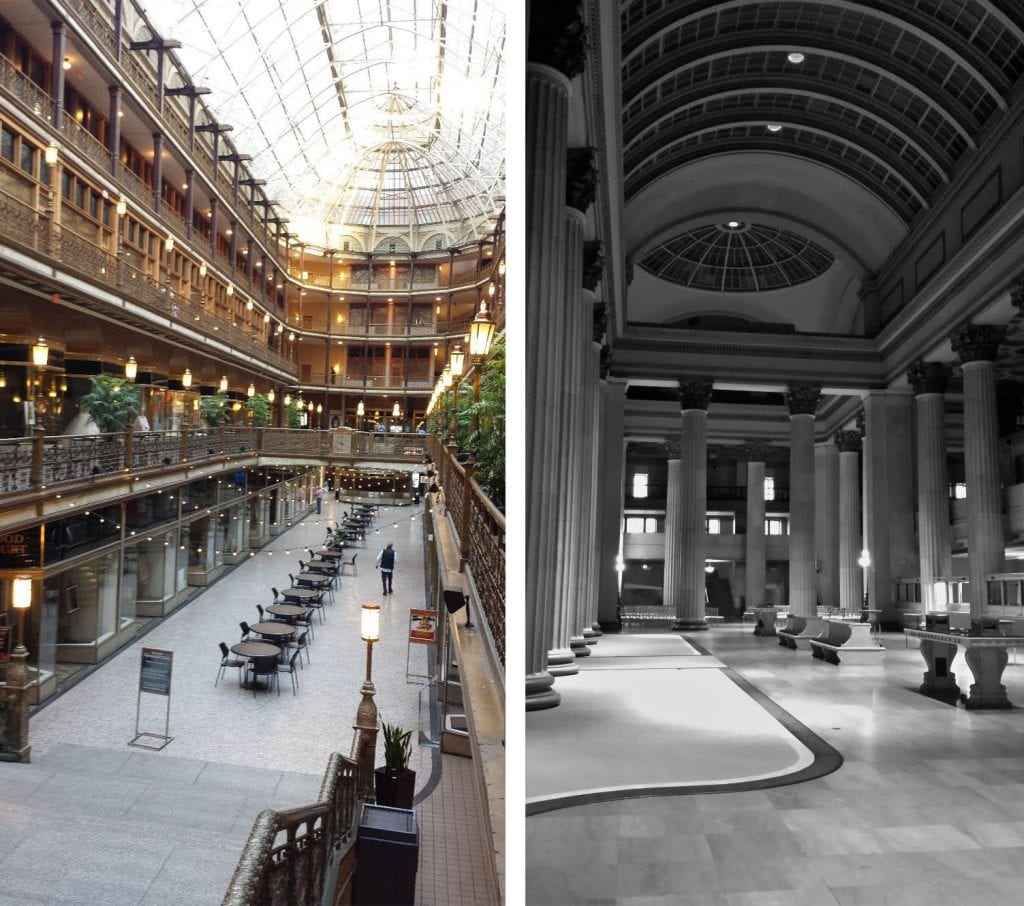
Our explorations of Cleveland poignantly substantiated the readings for the trip and laid bare the network of values and power dynamics that shape the physical dimensions of the city. As we walked through newly developed portions of the city center, such as the theater district and the recently renovated arcades, one question loomed larger and larger: Whom is Cleveland for? In Cleveland: A Metropolitain Reader, David C Perry argues that Cleveland was founded on speculation and quick profits, and those dynamics are seemingly alive and well today. As Pierre Clavel examines in The Progressive City, development can either manifest as structures or as services for the people, and any casual observer can see, by the monolithic new buildings and poor segregated communities, that development in Cleveland is certainly the former. As Norman Krumholz and John Forester illustrate in Making Equity Planning Work, it is exceedingly difficult to implement long term planning when politics favor short term projects that create political appeal, while long term projects, especially service projects, have little marketable qualities and minimal political advantage. It is evident that Cleveland has espoused a pro-growth attitude, growth dictated by the business elites, growth at the expense of the disadvantaged city citizens, growth that does little to improve the equity in downtown Cleveland.

Our walking tours clearly illustrated this dynamic. New high rises supported by tax abatements intended to serve the business class abounded; while new mixed-use residential (again, supported by tax abatements) were intended to attract the creative class, a.k.a Millennials with money. All the recent historical preservation projects, meant to kickstart the downtown business sector, smacked of wealth and classicism. I felt that is was somewhat ironic that the structures receiving the most financial support and veneration were structures of the Gilded Age, a time when elites flaunted their prolific wealth and the rights of the working poor were trampled. Are these Gilded Age relics not of the same ilk as the Robert E. Lee statues of the South, symbols of oppression? Indeed, walking through the cavernous halls of Union Trust, a bank that actively suppressed financial support to disadvantaged communities, I could not help asking myself: To what end are we preserving and celebrating these buildings?

Are the ornate lobbies of the Union Trust and the Cleveland Arcade historical structures to venerate or symbols of oppression? It was not hard to miss the speculative atmosphere in the downtown district–rebuilt facades, palatial office buildings, and a new entertainment district–all coalesced into a general feeling of synthetic culture, culture created by the monied class to attract more of the monied class. This was not a space created by the people, but a space contrived for the people, a business scheme shrouded by a thin veil of community and neighborhood vitality. It was contrivance for profitable ends, and it was evident, by a general assessment of the demographics of those streets, that the growth locus of Cleveland is not meant for the people of Cleveland, but just as another colonial enterprise of the wealthy suburbanites, saddling the city with even more financial obligations in pursuit of benefits that may never materialize. However, if Cleveland wants to grow, what choice does it have in a capitalistic system? If the trend is to flee the city, then the only means of staunching that flow, if not reversing it, is to incentivize development through financial means. In a society governed primarily by our pocketbooks, this investment could not occur strictly as a moral imperative. In other words, investments are not going to return to the city because it’s the right thing to do, rather, it will return because it is the profitable thing to do. However, in capitalistic system where there are winners and losers, the inner-city development catalyzed by generous tax abatements ensures that the losers are those that are already losing. And even if Cleveland manages to create enough momentum where current investments trigger new investments, will it have the capacity and political will to harness the revenue-generating capacities of this growth? With the business class in command of the government, it is safe to conclude that rulers taxing themselves is a dubious proposition. These capitalistic forces hinder even the most noble of efforts to improve the lot of the disadvantaged. Speaking with the members of different CDCs attempting to improve the conditions of the underserved, it was clear that they are operating within a paradox they don’t have the means of solving. By targeting the most underserved for financial support, by improving the physical conditions of neighborhoods, the CDCs are certainly meeting their goal of improving the quality of life for those in those neighborhoods, but a question that not a single member could answer were the long-term prospects of these wealth-building mechanisms. If property values rose over time, affordability would decrease, pushing low-income people into underdeveloped, underserved communities. The apparent inextricable link between community health and property value ensures that investments in a community will ultimately force those residents out if their income-generating capabilities are not improved. If capitalistic forces continue to predominate, the plight of the marginalized do not stand a chance since they neither offer any financial gain to businesses, significant political gain for politicians, or gains to wealthy in suburban areas. The ruling class has a vested interest in suppressing the working class to preserve what is profitable. Cleveland is a city for the elites, and it has a long, tumultuous period of soul-searching ahead before equity is even invited to the planning table.
Jon Ignatowski, MRP 2020